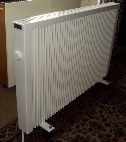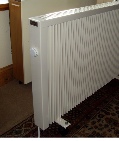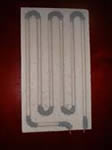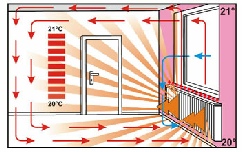s a

Quality German Electric Heating





Heating Scotland from Elgin & Glasgow Tel:-
Please check us out on Facebook
Next:-

The Science of German Chamotte Clay Core Heaters
The secret to the low running costs of these radiators is this:-
Inside each heater is a series of refractory clay blocks. There are up to twenty Independent blocks in each radiator.
Each Block has encased within it an air tight heat element that heats up very quickly, typically in just a few minutes... It then holds on to heat for long periods thereafter.
As the blocks get hot the heat is transferred into the radiator body, which in turn sets off the natural radiant and convection heater process...
Because of the construction and because they are water tight and air tight, they have a virtually unlimited life expectancy
The technology within the radiator for heat conservation and heat distribution capability is incredible and customers report just a cosy, cosy comfort and savings on their fuel bills!
Once the room reaches the desired temperature a thermostat turns the heater off, but the room temperature doesn't plummet like with conventional heating, instead the room remains warm using the stored heat.
Because of this storage capability test show the heater might only draw electricity for 15 to 20 minutes per hour depending on the insulation levels in the room.
For more technical information click on any of the pictures opposite


More Technical
Apart from the unique refractory clay blocks there is another secret to performance of these radiators.... The unique fluted design!
The flutes are about an inch deep, far more than conventional radiators, this dramatically increases the surface area. It is said that one foot of these radiators has the equivalent surface area of five feet of a standard radiator So a 3ft long Elti radiator with its huge radiant surface can be compared to fifteen feet of a standard radiator!. Perhaps now you can see why these radiators are so efficient and unique!
The overall result seen in the diagram is based on the following heat principles:
1. During the heating cycle some of the heat is stored in preparation for the coming hour.
2. Warmth is supplied to the body of the heater by the clay core and radiated into the room through the expanded surface area provided by the flutes.
3. Because the flutes are hollow and close to floor level on the inlet, cold air at floor level is attracted into the flutes and punched out of the top to provide a means of cosy warmth distribution
4. As the room begins to equalise, there is less cold air at floor level so convection is reduced in favour of the cosier radiant heat.
Opposite, you may see an embedded video, (not supported on all browsers) which shows me (John) demonstrating the heat retaining properties of our clay core. (Note this video was made six years ago when I was younger and had more hair! Warning:-
Click anywhere on page to return to main screen




Sorry! If you cant see a video here then your browser does not support this file type
More Technical
Apart from the unique refractory clay blocks there is another secret to performance of these radiators.... The unique fluted design!
The flutes are about an inch deep, far more than conventional radiators, this dramatically increases the surface area. It is said that one foot of these radiators has the equivalent surface area of five feet of a standard radiator So a 3ft long Elti radiator with its huge radiant surface can be compared to fifteen feet of a standard radiator!. Perhaps now you can see why these radiators are so efficient and unique!
The overall result seen in the diagram is based on the following heat principles:
1. During the heating cycle some of the heat is stored in preparation for the coming hour.
2. Warmth is supplied to the body of the heater by the clay core and radiated into the room through the expanded surface area provided by the flutes.
3. Because the flutes are hollow and close to floor level on the inlet, cold air at floor level is attracted into the flutes and punched out of the top to provide a means of cosy warmth distribution
4. As the room begins to equalise, there is less cold air at floor level so convection is reduced in favour of the cosier radiant heat.
Opposite, you may see an embedded video, (not supported on all browsers) which shows me (John) demonstrating the heat retaining properties of our clay core. (Note this video was made six years ago when I was younger and had more hair! Warning:-
Click anywhere on page to return to main screen




Sorry! If you cant see a video here then your browser does not support this file type